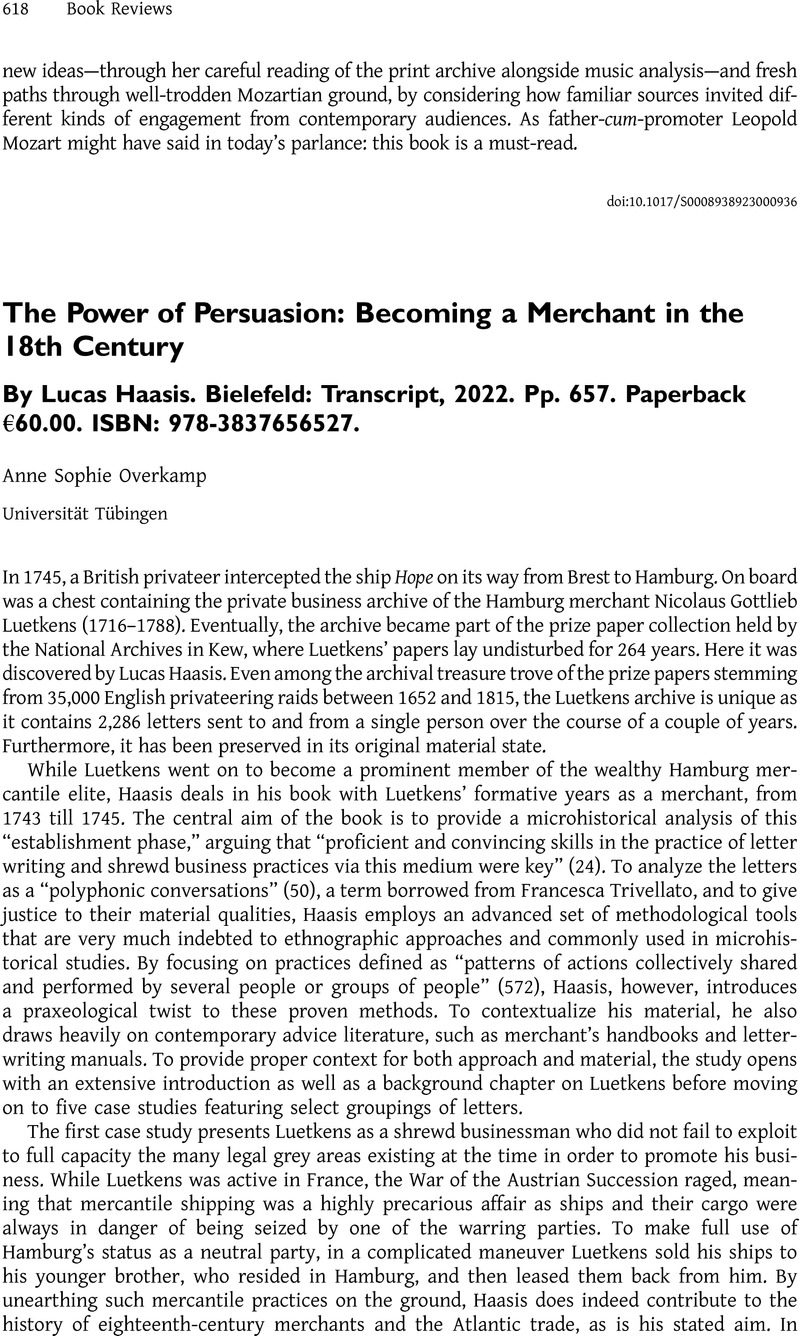No CrossRef data available.
Article contents
The Power of Persuasion: Becoming a Merchant in the 18th Century By Lucas Haasis. Bielefeld: Transcript, 2022. Pp. 657. Paperback €60.00. ISBN: 978-3837656527.
Review products
The Power of Persuasion: Becoming a Merchant in the 18th Century By Lucas Haasis. Bielefeld: Transcript, 2022. Pp. 657. Paperback €60.00. ISBN: 978-3837656527.
Published online by Cambridge University Press: 28 December 2023
Abstract
An abstract is not available for this content so a preview has been provided. Please use the Get access link above for information on how to access this content.

- Type
- Book Review
- Information
- Copyright
- Copyright © The Author(s), 2023. Published by Cambridge University Press on behalf of Central European History Society of the American Historical Association


